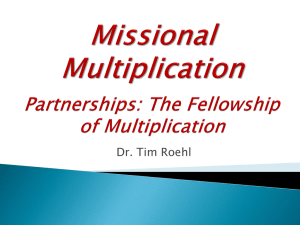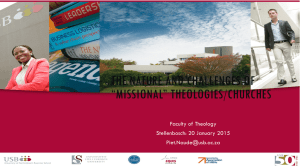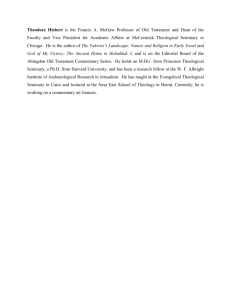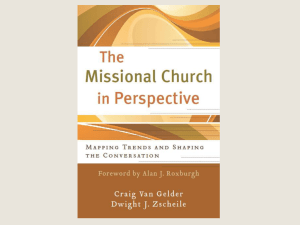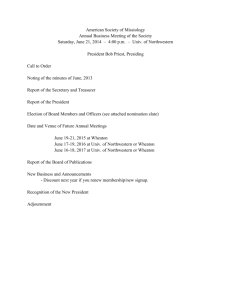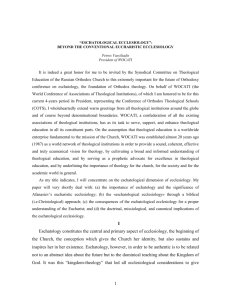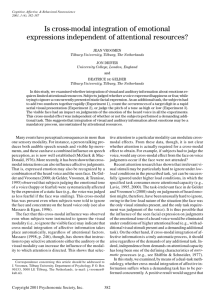Craig VAN GELDER, The Essence of the Church: A Community
advertisement
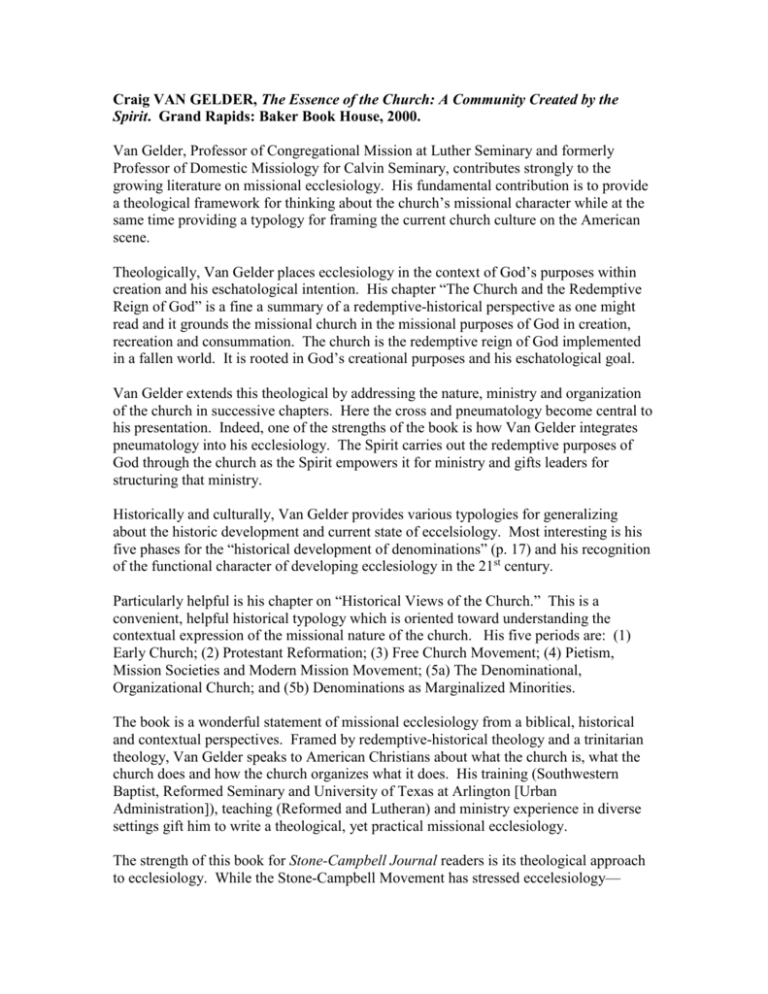
Craig VAN GELDER, The Essence of the Church: A Community Created by the Spirit. Grand Rapids: Baker Book House, 2000. Van Gelder, Professor of Congregational Mission at Luther Seminary and formerly Professor of Domestic Missiology for Calvin Seminary, contributes strongly to the growing literature on missional ecclesiology. His fundamental contribution is to provide a theological framework for thinking about the church’s missional character while at the same time providing a typology for framing the current church culture on the American scene. Theologically, Van Gelder places ecclesiology in the context of God’s purposes within creation and his eschatological intention. His chapter “The Church and the Redemptive Reign of God” is a fine a summary of a redemptive-historical perspective as one might read and it grounds the missional church in the missional purposes of God in creation, recreation and consummation. The church is the redemptive reign of God implemented in a fallen world. It is rooted in God’s creational purposes and his eschatological goal. Van Gelder extends this theological by addressing the nature, ministry and organization of the church in successive chapters. Here the cross and pneumatology become central to his presentation. Indeed, one of the strengths of the book is how Van Gelder integrates pneumatology into his ecclesiology. The Spirit carries out the redemptive purposes of God through the church as the Spirit empowers it for ministry and gifts leaders for structuring that ministry. Historically and culturally, Van Gelder provides various typologies for generalizing about the historic development and current state of eccelsiology. Most interesting is his five phases for the “historical development of denominations” (p. 17) and his recognition of the functional character of developing ecclesiology in the 21st century. Particularly helpful is his chapter on “Historical Views of the Church.” This is a convenient, helpful historical typology which is oriented toward understanding the contextual expression of the missional nature of the church. His five periods are: (1) Early Church; (2) Protestant Reformation; (3) Free Church Movement; (4) Pietism, Mission Societies and Modern Mission Movement; (5a) The Denominational, Organizational Church; and (5b) Denominations as Marginalized Minorities. The book is a wonderful statement of missional ecclesiology from a biblical, historical and contextual perspectives. Framed by redemptive-historical theology and a trinitarian theology, Van Gelder speaks to American Christians about what the church is, what the church does and how the church organizes what it does. His training (Southwestern Baptist, Reformed Seminary and University of Texas at Arlington [Urban Administration]), teaching (Reformed and Lutheran) and ministry experience in diverse settings gift him to write a theological, yet practical missional ecclesiology. The strength of this book for Stone-Campbell Journal readers is its theological approach to ecclesiology. While the Stone-Campbell Movement has stressed eccelesiology— perhaps more than any other evangelical American tradition—it has generally focused on form (e.g., polity) and membership (e.g., baptism). In contrast, Van Gelder’s ecclesiology has a trinitarian focus that places the missional character of the church in the context of redemptive history. On the other hand, his chapter on organization is the weakest and least helpful to those in the Stone-Campbell tradition. Nevertheless, for those within the Stone-Campbell Movement who seek to emphasize the missional nature of the church in the current American context, this book is a “must” read. John Mark Hicks Professor of Theology Lipscomb University


